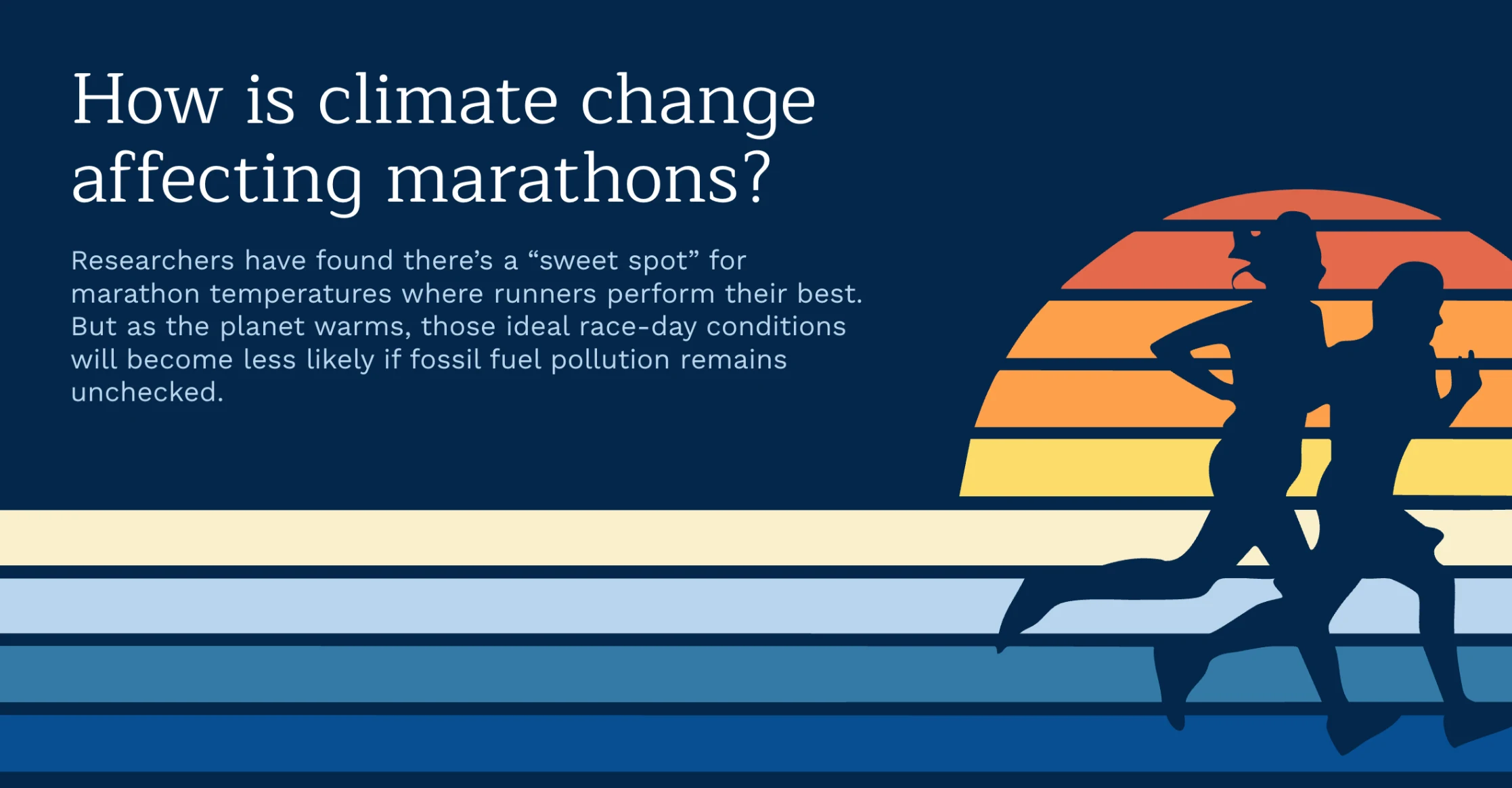Report•October 28, 2025
Running Out of Cool Days

Read the full report: Running Out of Cool Days: How climate change is decreasing the odds of optimal marathon conditions
Researchers have found there is a “sweet spot” for marathon temperatures where runners perform their best. But as the planet warms, those optimal race-day conditions are becoming less likely. This report explores which races are projected to remain record-breaking contenders — and which risk losing their competitive edge if fossil fuel pollution remains unchecked.
Key Messages
Of 221 global races analyzed, 190 of them (86%) will see a decline in odds of optimal running marathons for either recreational or elite runners by 2045, including all seven Abbott World Marathon Majors.
For elite male runners, the Tokyo Marathon offers the highest likelihood of ideal conditions — there was a 69% chance of optimal temperatures in Tokyo on March 2, 2025 — among the seven Abbott World Marathon Majors. But it’s also expected to see the largest decline in odds by 2045 (dropping by 12 percentage points) for this group of runners.
Elite female runners are uniquely resilient, maintaining optimal performance at higher temperatures than elite men and other runner types — though their odds of experiencing ideal race-day conditions are still projected to decline over the next two decades.
The exceptional heat experienced at the 2025 Berlin and Tokyo Marathons was well above peak performance conditions and was made two and three times more likely, respectively, by human-caused climate change.
Earlier race start times (closer to sunrise rather than late morning) would increase the chances of optimal running temperatures. However, the most effective way to preserve ideal race-day conditions is by taking meaningful action to curb fossil fuel pollution.
Data
Explore our data interactive to see the data for specific marathons and the top marathons for each runner type
.
Major funding provided by the Bezos Earth Fund
